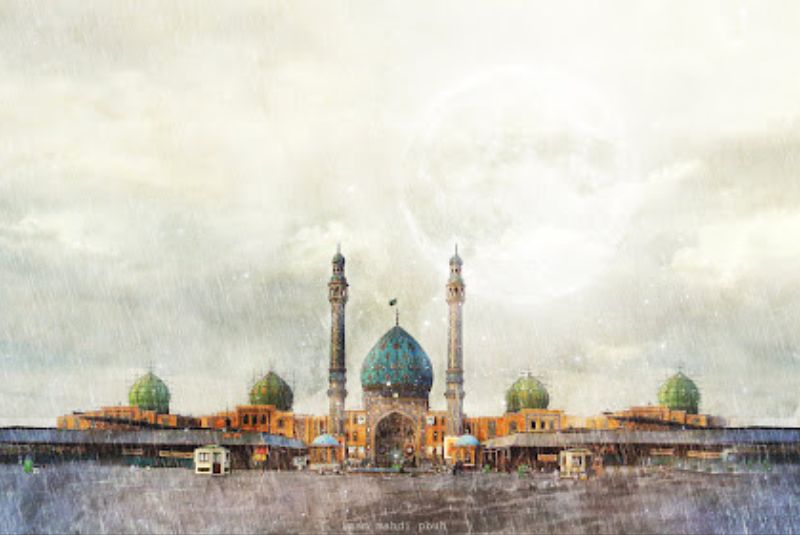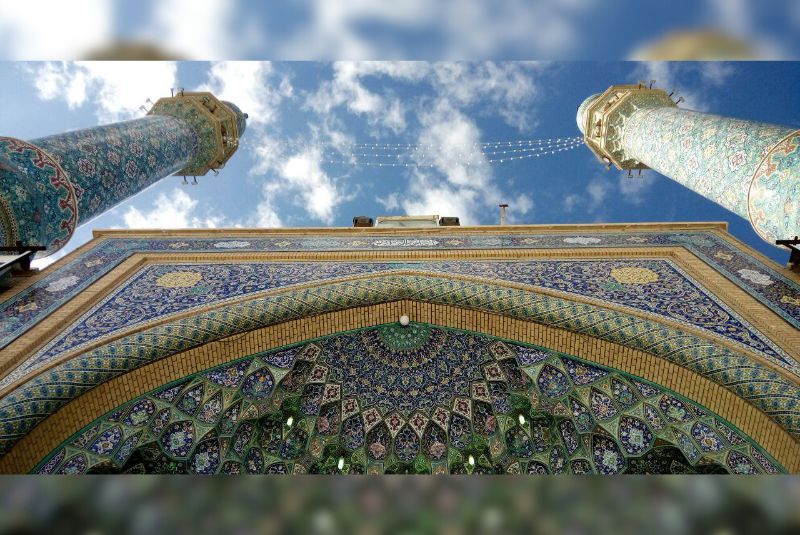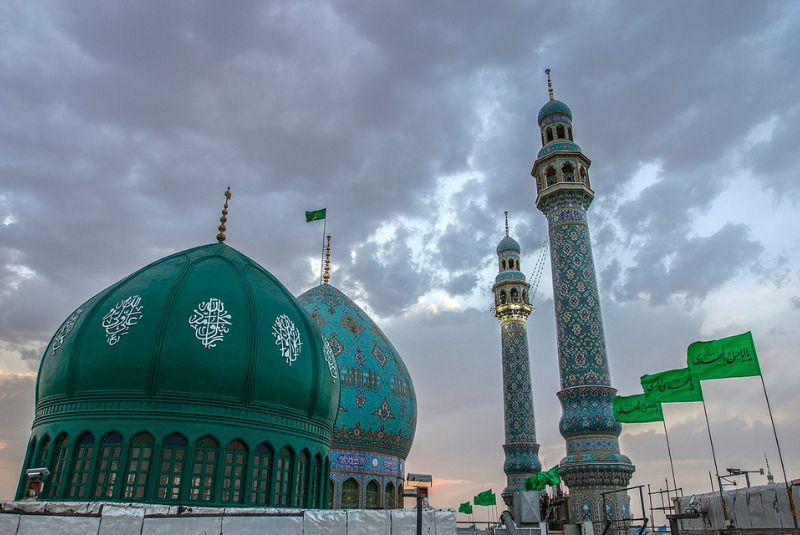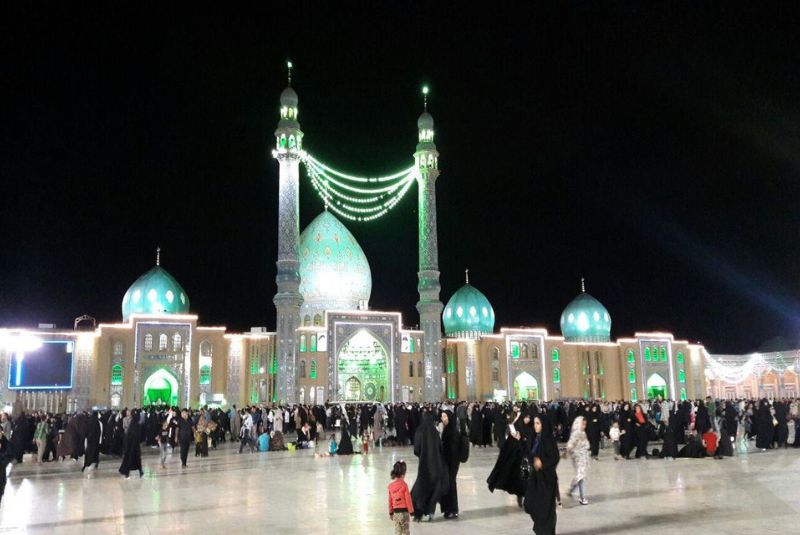Jamkaran Mosque | A Spiritual Hub in Qom
The Jamkaran Mosque, located near the city of Qom, Iran, is a revered site in Shia Islam. Known for its spiritual significance and stunning architecture, the mosque draws millions of pilgrims and tourists from around the world each year.
With a history deeply intertwined with Shia beliefs and traditions, Jamkaran Mosque stands as a beacon of faith, devotion, and architectural beauty. Whether you are a devout follower or a curious traveler, a visit to this mosque offers a unique glimpse into the heart of Shia Islam and Iranian culture.
History and Significance

The history of Masjed-e Jamkaran dates back to 984 CE when it is believed to have been constructed following a vision experienced by a local villager named Sheikh Hassan ibn Muthlih Jamkarani. According to the legend, Imam Mahdi, the twelfth Imam in Shia Islam, appeared to Sheikh Hassan in a dream, instructing him to build a mosque on the site. This vision led to the construction of the mosque, which has since become a significant pilgrimage site for Shia Muslims.
Jamkaran Mosque holds a special place in the hearts of Shia believers as it is associated with the Mahdi, who is considered the prophesied redeemer of Islam. The mosque is often visited by pilgrims who seek to offer prayers and supplications, particularly on Tuesday nights, which are believed to hold special spiritual significance.
Over the centuries, the mosque has undergone numerous renovations and expansions, reflecting its growing importance in the Shia community. The current structure of the mosque includes stunning domes, minarets, and courtyards that showcase the rich architectural heritage of Iran and Islam. The mosque’s central location near Qom, a city known for its religious institutions and seminaries, further underscores its significance as a hub of spiritual activity and learning.
Architectural Details of the Jamkaran Mosque

Jamkaran Mosque is a marvel of Islamic architecture, blending traditional Persian design elements with modern features to create a visually stunning and spiritually uplifting space. The mosque's layout includes expansive courtyards, grand prayer halls, and intricate decorative details that reflect the rich cultural heritage of Iran and Islam.
Domes and Minarets
The mosque is adorned with several domes and minarets, each featuring intricate tile work and calligraphy. The main dome, covered in turquoise tiles, stands majestically at the center of the mosque, symbolizing the heavens and the divine. The minarets, rising tall and slender, are decorated with geometric patterns and inscriptions from the Quran, serving both as a call to prayer and a beacon of faith.
Prayer Halls
The interior of Jamkaran Mosque houses vast prayer halls designed to accommodate thousands of worshippers. The main prayer hall is a serene space with high ceilings, adorned with chandeliers that cast a soft, ethereal light. The walls and ceilings are embellished with delicate stucco work and mosaic tiles, depicting floral motifs and verses from the Quran, creating an atmosphere of reverence and contemplation.

Courtyards
The mosque features several courtyards, providing open spaces for reflection and communal gatherings. These courtyards are lined with arcades and fountains, offering a tranquil environment for visitors to meditate and pray. The central courtyard, in particular, is a focal point, often bustling with pilgrims who come to offer their supplications and seek spiritual solace.
Decoration and Symbolism
Every aspect of Jamkaran Mosque’s architecture is imbued with symbolic meaning. The use of blue and turquoise tiles throughout the mosque signifies peace and spirituality. The intricate calligraphy and geometric designs are not only aesthetically pleasing but also represent the infinite nature of creation and the unity of God. The mosque's mihrab, the niche indicating the direction of Mecca, is beautifully adorned with detailed tile work, serving as the spiritual heart of the mosque where the imam leads the prayers.
Expansion and Modernization
In recent years, Jamkaran Mosque has undergone significant expansions to accommodate the growing number of pilgrims. Modern facilities, including libraries, lecture halls, and accommodation for visitors, have been added, enhancing the mosque’s ability to serve as a center for religious education and community activities.
The Museum of Religion in Jamkaran Mosque

Within the mosque complex, you will find the Museum of Religion and the World of the Holy Mosque of Jamkaran. This museum, considered the first conceptual museum in the Islamic world, plays a crucial role in promoting the Islamic lifestyle through religious verses and traditions.
The museum features ten thematic sections, known as treasures, which include areas dedicated to worship, environment, work and life, cultural defense, military defense, and several others. These exhibits provide a comprehensive look at various aspects of Islamic culture and history.
Museum Hours
- Tuesdays, Thursdays, and Fridays: 16:00 to 22:00
- Saturday, Monday, Wednesday: 9:00 to 14:00 (group visits by prior arrangement only)
Jamkaran Mosque Visitor Tips

Visiting Jamkaran Mosque can be a deeply enriching experience. To make the most of your visit, consider the following tips:
Location
Jamkaran Mosque’s location is in Jamkaran village, near the city of Qom. The exact address is:
Address: Qom Province, 6 km from Qom city, Jamkaran village, at the end of Prophet Azam Blvd.
Visiting Hours
- Best Time to Visit: Jamkaran Mosque is open to visitors throughout the year, but the best time to visit is during weekdays to avoid the larger crowds on Fridays and religious holidays.
- Opening Hours: Jamkaran Mosque is open 24 hours a day, seven days a week, making it accessible to visitors at any time. This continuous availability ensures that pilgrims and tourists can experience the spiritual ambiance of the mosque whenever they choose.
Dress Code
- Modest Clothing: Visitors are expected to dress modestly. Men should wear long pants and shirts with sleeves, while women are required to wear a headscarf, long sleeves, and a loose-fitting dress or coat.
- Headscarf Availability: If you don't have a headscarf, they are often available at the mosque entrance for visitors.
Photography
- Permission Required: Taking photographs inside the mosque is generally allowed, but it's respectful to ask for permission, especially in areas where people are praying.
- No Flash Photography: Avoid using flash to ensure you do not disturb the worshippers.
Behavior and Etiquette
- Quiet and Respectful: Maintain a quiet and respectful demeanor at all times. This is a place of worship, and loud conversations or disruptive behavior are considered inappropriate.
- No Shoes: Remove your shoes before entering the prayer halls. There are designated areas to leave your footwear at the entrance.
Facilities
- Restrooms and Ablution Areas: The mosque has clean restrooms and ablution facilities. It’s customary to perform ablutions (wudu) before entering the prayer hall.
- Guided Tours: Consider taking a guided tour if available. Local guides can provide valuable insights into the history, architecture, and significance of the mosque.
Accessibility
- Wheelchair Access: Jamkaran Mosque is equipped with facilities for visitors with disabilities, including ramps and accessible restrooms.
- Language: While Arabic and Persian are the primary languages used, you may find guides or volunteers who speak English.
Spiritual Practices
- Participation in Prayers: Non-Muslim visitors are welcome to observe the prayers but are not required to participate. Feel free to sit quietly at the back or in designated areas.
- Special Nights: Jamkaran Mosque is particularly busy during significant religious nights, such as Thursday evenings and the 15th of Sha'ban, the birthdate of Imam Mahdi. These times offer a unique opportunity to witness the devotion and rituals of the Shia community.
Nearby Attractions
- Exploring Qom: Take time to explore the city of Qom, known for its rich religious heritage and numerous other shrines and mosques.
- Local Cuisine: Don’t miss trying the local cuisine at nearby restaurants and food stalls. Qom is known for its delicious traditional dishes and sweets (like Sohan).

Finally!
Visiting Jamkaran Mosque is a profound journey into the heart of Shia Islam and Iranian culture. This revered site, with its rich history, architectural splendor, and deep spiritual significance, offers a unique glimpse into the religious life of Iran. From its legendary origins tied to Imam Mahdi to its modern role as a vibrant center of worship and pilgrimage, Jamkaran Mosque stands as a testament to enduring faith and tradition. Whether you are a pilgrim seeking spiritual solace, a history enthusiast eager to explore Iran's religious heritage, or a traveler in search of architectural marvels, Jamkaran Mosque in Qom provides an unforgettable experience. Respectful and well-prepared, visitors can immerse themselves in the serene and sacred atmosphere of this iconic mosque, gaining a deeper appreciation of its role in the lives of millions of Shia Muslims worldwide.
Share your story!
Comment below and let us know about your Experience.
Your story inspires others!


Comment
Leave a Comment